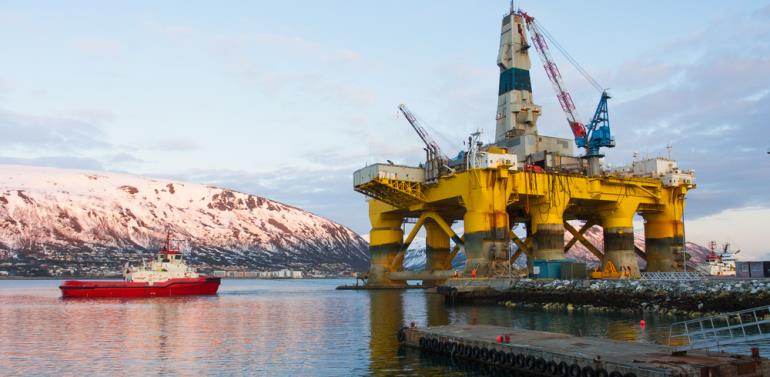International
Norwegian Ministry offers first new exploratory acreage for 20 years

The Norwegian Ministry of Petroleum and Energy has announced that 26 companies have bid for acreage in the 23rd licensing round. The round offers nearly 60 frontier exploration blocks with around half in the exciting new Arctic province of the Norwegian Southeast Barents sea. Wood Mackenzie says that applicants have been attracted to the acreage as it could hold over two billion barrels of new oil and gas reserves. However, according to Wood Mackenzie, potential discoveries will have to be very large to breakeven because of the remoteness of the location and expected challenging reservoir characteristics. Despite this, major oil and gas companies will view the SE Barents as a long-term strategic move, whilst taking advantage of reduced exploration costs afforded by the Norwegian tax system.
So why has the Southeast Barents attracted so much interest? Malcolm Dickson, Principal North Sea Analyst at Wood Mackenzie says, “This is the first time in 20 years that new exploration acreage has opened up in Norway and because of the potential for large discoveries, it’s no surprise to see so many companies involved, despite the current oil price. Four of the Majors – BP, Shell, Statoil and Chevron, have bid in the round, which implies there are big prospects to test.”
Wood Mackenzie asserts that it’s a volume story, as Mr Dickson continues, “We believe that there could be over 2 billion barrels of oil and gas in the southeast Barents alone. But our most recent analysis shows that minimum economic field sizes in this new area – volumes yielding at least a 10% return – at our base case price assumptions are 0.5 billion (bn) barrels of oil equivalent (boe) for oil and 1.1 bn boe or 6 trillion cubic feet (tcf), for gas/condensate. Therefore it will be important to find larger discoveries or a critical mass of smaller finds to make development economic. However, we could see lower minimum economic field sizes if companies can reduce spend on wells, either through more efficient drilling or cheaper rig contracts. In this case, we could see the minimum economic size for oil drop to 300 mmboe, for instance.”
Wood Mackenzie says that despite high minimum economic field sizes and the challenging low oil price environment, companies will see the potential for value creation. Neivan Boroujerdi, Norway Upstream Analyst at Wood Mackenzie explains, “We have seen a big slow down in global exploration– with less emphasis on frontier areas. This licensing round bucks that trend, as it provides access to a frontier region, where producers can take advantage of the cheap exploration afforded by the Norwegian tax system in the form of a 78% tax rebate – as well as benefitting from an established service sector and – crucially, the least severe operating conditions of any Arctic basin. This is a relatively benign environment compared to most other Arctic regions and with virtually no sea ice. The main challenges will come in the form of the remoteness from infrastructure and the potentially difficult hydrocarbon reservoir conditions.”
Dr Andrew Latham, Vice President of Exploration research at Wood Mackenzie expands, “Exploration costs in the Norwegian Barents are significantly less than everywhere else in the Arctic offshore. A consortium of over 30 companies has already shared acquisition costs for new 3D seismic. Future Norwegian Barents exploration wells might cost around US$20 million – when taking the tax rebate into account. This is five to ten times less than the cost per well offshore Greenland during 2010-2011, and more than 20 times less than the drilling costs in the both Russian and Alaskan offshore Arctic during 2014-2015.”
Wood Mackenzie says there was huge anticipation for the SE Barents acreage to open up, with many wondering if this would act as a litmus test for the Upstream industry’s Arctic appetite? “We wouldn’t go as far as to say that success in the SE Barents will spur wider Arctic interest or exploration activity, because the environmental conditions and associated costs are incomparable. However, from the range of applicants announced today, it’s clear that we are entering a significant new stage in Norwegian exploration, and this could eventually be a major source of production,” says Mr Dickson. Mr Boroujerdi offers in closing, “With such a high level of competition, it will be corporate funding, expertise and partnerships that will determine who is successful, and who is frozen out.”
-

 Banking & Finance1 week ago
Banking & Finance1 week agoOman Oil Marketing Company Concludes Its Annual Health, Safety, Environment, and Quality Week, Reaffirming People and Safety as a Top Priority
-

 Economy2 months ago
Economy2 months agoMaal Card: What Oman’s New National Payment Card Means for Everyday Users
-

 Leaders Speak2 months ago
Leaders Speak2 months agoDhofar International Development and Investment Company: Driving Sustainable Growth and Strategic Synergies in Oman’s Investment Landscape
-

 Events2 months ago
Events2 months agoOER Corporate Excellence Awards 2025 Honours Entities and Innovations in Oman
-

 News1 month ago
News1 month agoSheikh Suhail Bahwan, Chairman of Suhail Bahwan Group, Passes Away
-

 News1 month ago
News1 month agoOIG Appoints New CEO to Lead Its Next Chapter of Excellence
-

 Economy2 months ago
Economy2 months agoOman Unveils Official Omani Rial Symbol in Landmark Move to Boost Global Currency Presence
-

 News1 month ago
News1 month agoReport: How India & The Middle East Are Exploiting Immense Economic Synergies




























You must be logged in to post a comment Login